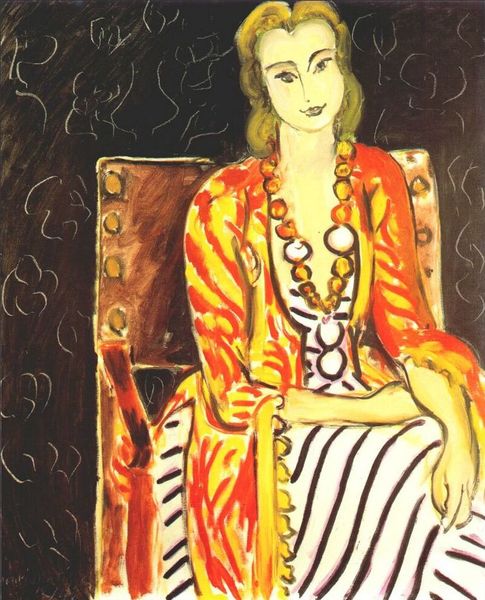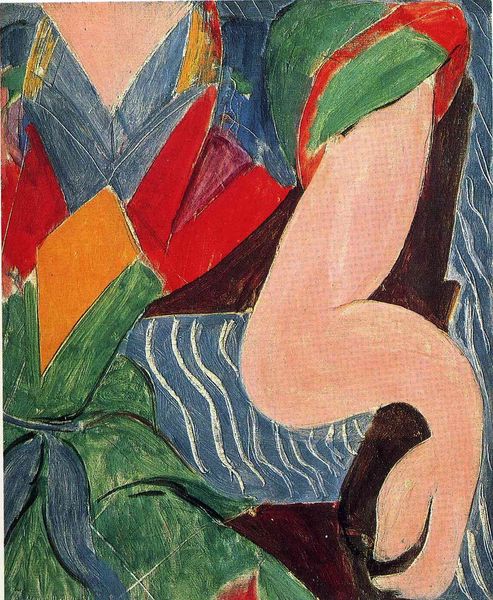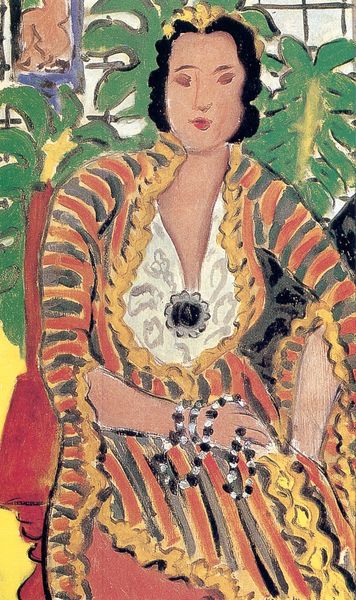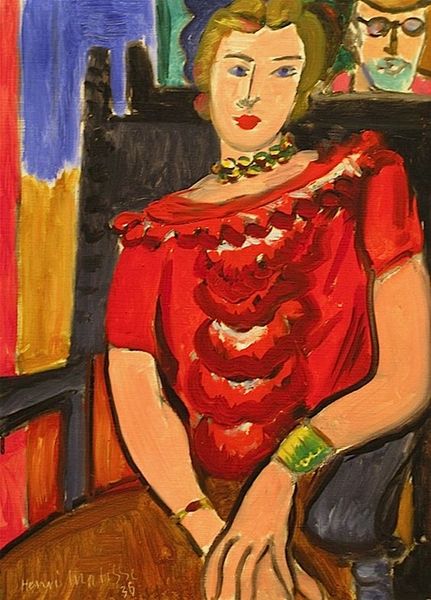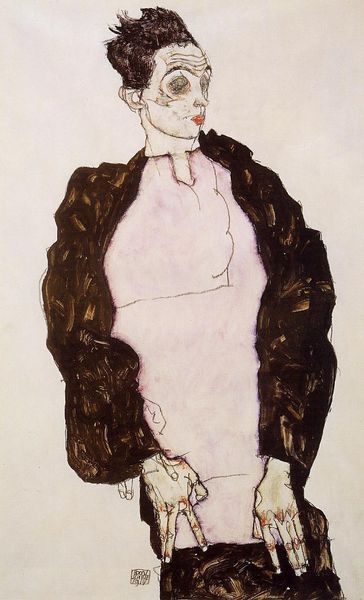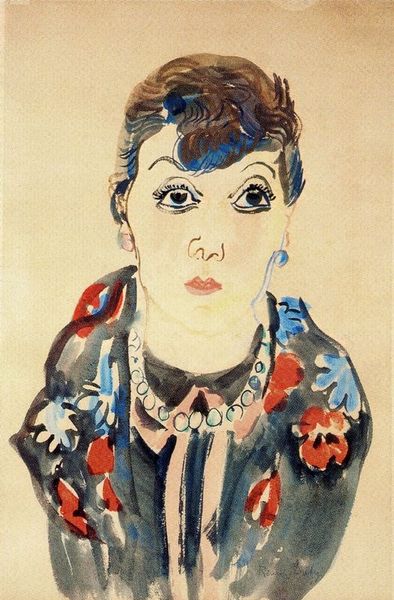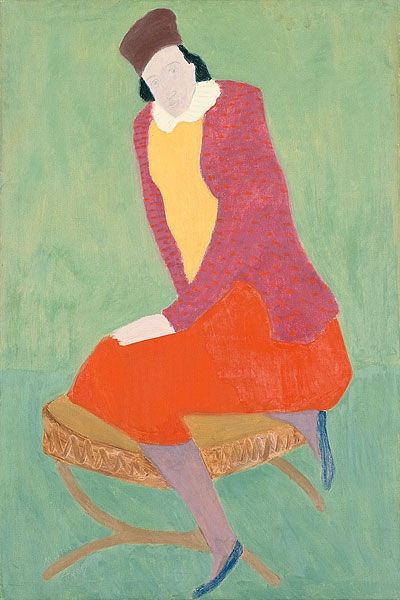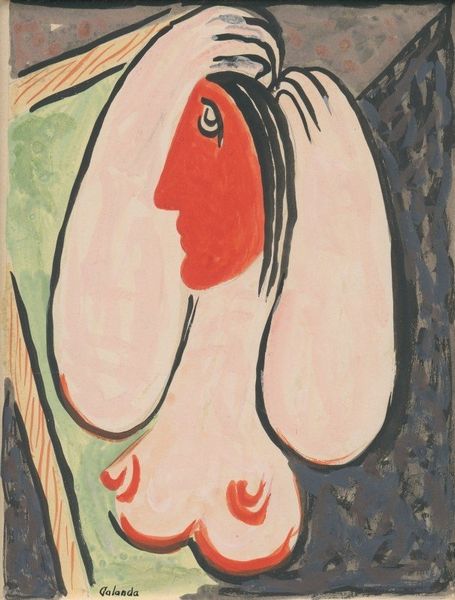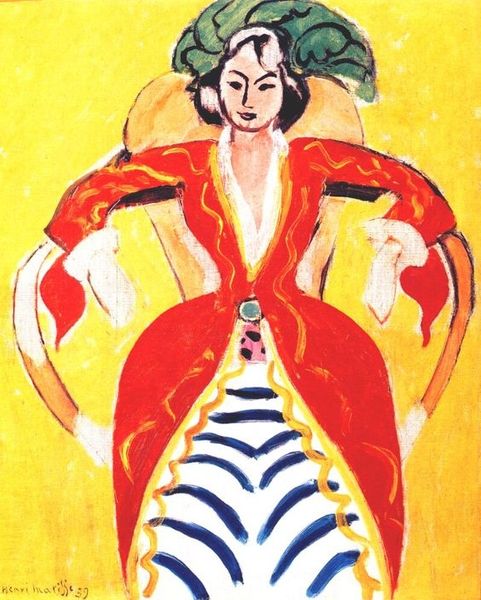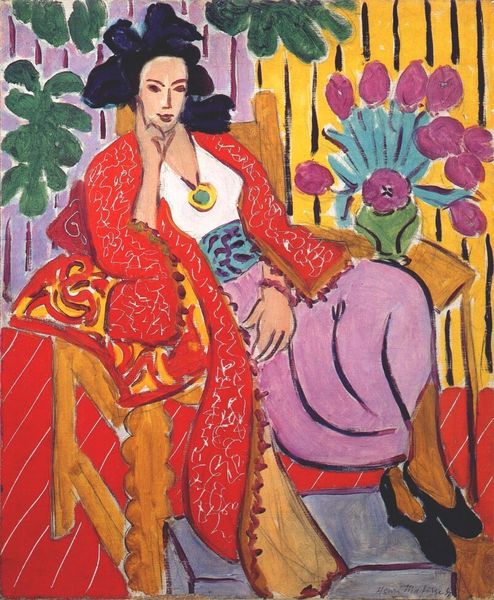
Copyright: Henri Matisse,Fair Use
Curator: Ah, "Helene" by Henri Matisse, painted in 1937. A vibrant portrait done in oil paint, emblematic of his Fauvist sensibilities. Editor: It strikes me immediately as a symphony of disjunctive colour and restless line. The patterning, in particular, feels almost…unsettling. Curator: Unsettling? How so? Is it perhaps the symbolic weight of red, its association with vitality but also with potential disruption? Editor: It’s the juxtaposition. Those thick stripes are repeated, altered in colour and thickness but essentially static. Juxtapose it against the flowing black linework along the dress's edges or the leaves, it generates a powerful feeling of unease. Curator: I see your point. Those almost jagged edges definitely disrupt the perceived stability. Do you think there is cultural continuity in that the painting carries signs and symbols of status? Editor: Most certainly. Notice the geometric brooch at her neckline. An attempt to synthesize a stable figure within the dynamic painting—order from chaos. In semiotic terms, a clear signifier of identity construction. What I find intriguing is the flat green foliage which recalls earlier iconographies but has been stripped down to shape. Curator: It makes me wonder about the psychological effect Matisse was after. He presents this sitter using fairly abstracted planes but also presents the sitter as self-possessed. Editor: That's a great point. Her calm, almond-shaped eyes draw the gaze and ground the image but do so, paradoxically, because her features aren't quite photo-realistic; they hint at the mask of performance, the cultural performance of identity. It’s not portraiture as replication. Curator: Precisely! So, rather than capturing 'Helene,' he evokes an impression, filtered through both his aesthetic and, dare I say, her own performed identity. Editor: Leaving us with an image that compels continued visual scrutiny—precisely the goal of great painting. Curator: Absolutely, it reveals not just visual information but prompts deeper reflection on representation and its cultural significance.
Comments
No comments
Be the first to comment and join the conversation on the ultimate creative platform.
